mother-of-pearl
Posted on October 31 2021
What is mother-of-pearl?
There mother-of-pearl is the inner coating, with the iridescent reflections of certain mollusk shells. This word comes from the etymology of the Arabic word “naqqarah”.
Mother-of-pearl, an organic element
Mother-of-pearl is a biocomposite mineral material, synthesized by molluscs throughout their existence and lining the inside of their shells. It is composed of 85% microcrystals of aragonite, a calcium carbonate, bound by a protein called conchiolin (12%) with about 3% water.
It is the thin layers of aragonite that cause the iridescence effect.
The chemical formula of mother of pearl is CaCO3, its hardness is 3.5 to 4 on the Mohs scale and its specific gravity is 2.95. Mother-of-pearl is an organic material with blue, pink or yellow fluorescence, it has a scaly fracture, its luster is pearly.
Used for decoration and jewelry
It is a product that has been sought after for a long time for decoration, marquetry, jewelry making, to the point that certain shells such as abalones have locally disappeared. Some are bred for mother-of-pearl.

When an irritating foreign element enters the shell of these molluscs, they also secrete nacre layer after layer all around in order to protect themselves from it, thus forming one or more pearls.
In France, next to Lille, Méru is the world capital of mother-of-pearl. Y ou can visit the mother-of-pearl and tablet-making museum there. In the famous Méru workshop, it is used to make buttons, mother-of-pearl fans and various objects.
Pearly shells have also been widely used as wind musical instruments by drilling a few holes, especially in spiral shells.
Where do you find mother-of-pearl?
The genus Haliotis , from the Greek "marine" and "ear", includes many species of single-shell marine molluscs, found in the shallow waters of the coast. They live in cold to temperate and subtropical waters of the northern and southern hemispheres. They are usually called abalones or sea ears or sea truffles . Abalone is an anglicism.
In New Zealand , where it is primarily referred to by its Maori name, paua, it is renowned for its flesh, but especially for the iridescent blue colored nacre of its shell.
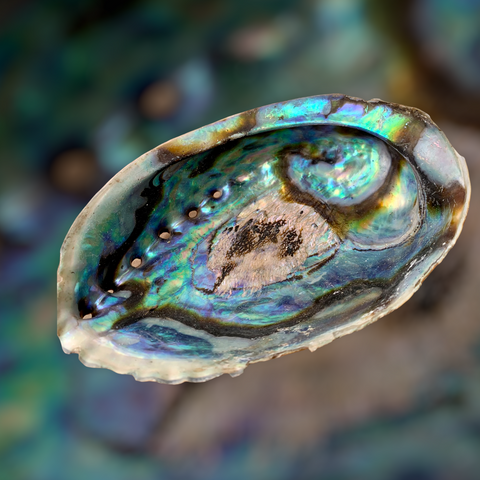
The main mother-of-pearl deposits are found in Akoya, Australia, Tahiti, Mabé, Keshi, in fresh waters.
abalone
A sought-after dish
Wherever this mollusc is present in abundance, it has been a source of human food for a long time. Its flesh is particularly appreciated in different cuisines: Latin America (Chile), France, New Zealand, Southeast Asia (China, Japan, Korea).
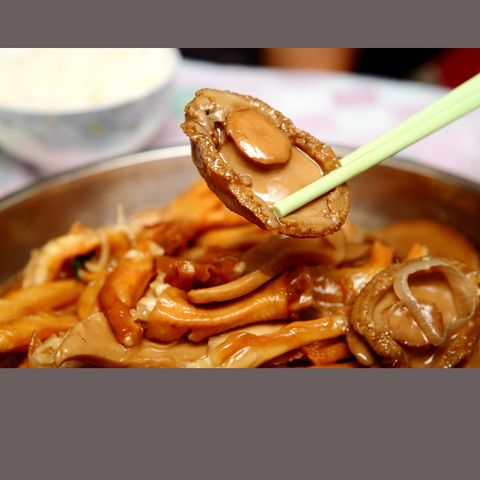
Abalone is a refined dish much sought after by gourmets in Brittany and Asia.
This animal becoming rare, or having disappeared from part of its range, breeding is practiced.
A rainbow color
The most common colors of mother-of-pearl range from silvery white to light pink, with iridescences of all the colors of the rainbow. An abalone called haliotis iris has all the colors of the rainbow.
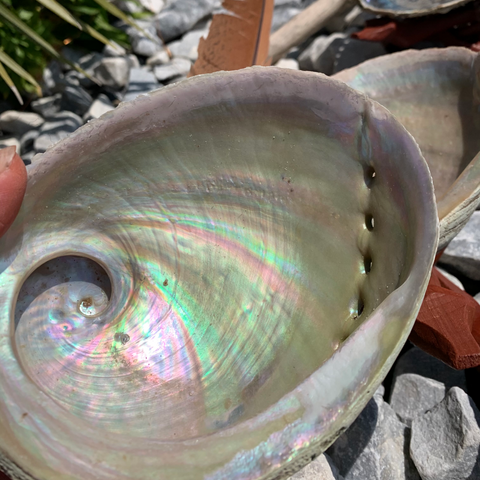
The mother-of-pearl from the Burgau shell also has a wonderful shine. It was used for a long time for the manufacture of fans.
Paua mother-of-pearl, or "sea opal", has predominantly blue-green colors on a dark background, a bit like traces of oil. It has long been used by Maori. She is considered the most beautiful.
An endangered shell
Abalone Prices undergo a constant increase , given the scarcity of supplies, its regression in the wild (overexploitation) and the growing demand of certain consumers.
In response to its scarcity or significant local disappearances, several countries have imposed severe harvest quotas or protection.
The history of mother-of-pearl and its legends
In English, it is called by the name given to it by the first Queen Elizabeth who lived in the 15th century: mother of pearl, mother of pearls.
His history
Mother-of-pearl has been used for a very long time by man. Mother-of-pearl artefacts have been found in Turkey dating from the Bronze Age, others in the Egyptian Badari civilization dating from 4,500 BC, among the Mayas, in the Ottoman and Mongol empires.
Mother-of-pearl tools and jewelery have been found in Mesopotamia. Shells have been used as currency all over the world. They were also used as containers. The Mayans used mother-of-pearl to make dental implants.
Pearly shells were also very present in Hinduism. The conch is one of the eight auspicious Ashtamangala emblems in Hinduism, Buddhism, Jainism and Sikhism. The dextrorotatory white shell is the trunk of heroes in Hindu epic literature. The Panchajanya conch is one of the attributes of the god Vishnu: it represents the creation of the world, of the primordial ocean.
In Buddhism, the conch represents the voice of Buddha and his teaching.
Some very large ones were used for baptismal fonts in churches. The milky, white and soft appearance of the pearly part of the shell combined with the water of baptism has made it a symbol of purification. The early Christians associated it with the Virgin Mary because of its purity and the scallop shell became the emblem of pilgrims to Compostela.
The legend of Saint Lucia
Around the Mediterranean, especially near Marseille and Corsica, there is a shell called the rough turbo. It produces an orange nacreous operculum, in the shape of an ear flap on one side, and milky white on the other. The mollusk gets rid of it when it is too small to make another one...
This operculum is called "eye of Saint Lucia". It is used in the manufacture of "lucky" jewelry and pendants.
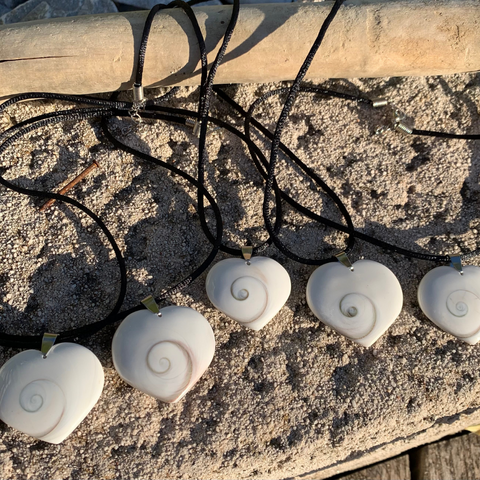
Legend has it that in the time of the first Christian martyrs, Lucia, to thank heaven for having miraculously healed her very sick mother, distributed all her wealth to the poor. This angered her husband and he denounced her to the Roman authorities as a Christian… Poor Lucia suffered many abuses and finally died stabbed, not without having sent her husband, in a tray, her two eyes that he had loved so much…
The symbolism of mother-of-pearl
In addition to being sublime with its reflections and pearls, mother-of-pearl jewelry is loaded with symbols. For the Greeks, mother-of-pearl is a symbol of love and they gave their beloved a jewel made of mother-of-pearl.
For Catholics, mother-of-pearl symbolizes purity and gentleness. They use it to make effigies of the Virgin or rosaries.
In China, mother-of-pearl is the symbol of immortality.
Psychological virtues
Regularly used in lithotherapy, mother-of-pearl acts on the third chakra (that of the solar plexus) by purifying the aura and strengthening the well-being of the wearer.
Due to its milky appearance, it is linked to motherhood. It is a feminine, soft and tender material that evokes maternal love and tenderness. She would have the ability to soften the character.
For Polynesians, mother-of-pearl is considered the marine reflection of divinity, the smile of the gods”. For Muslims, mother-of-pearl chases away bad astral influences, transforms the character of the embittered.
On a spiritual and energetic level
Mother-of-pearl is a powerful stone of intuition and open-mindedness: it stimulates imagination and creativity. It purifies the aura and thus facilitates access to the astral body. It promotes the circulation of energy.
Its slow and natural production in an aquatic environment gives it a strong vibratory power and a powerful purification capacity.
Whoever wears a pearly object benefits from the energy of water. Mother-of-pearl rebalances the energy circulation between body and mind, thus promoting health.
physical benefits
Research is currently being carried out to develop the use of mother-of-pearl and its regenerative properties for bones in reconstructive surgery. It is indicated in case of calcium deficiency.
Mother-of-pearl would promote bone regeneration (rheumatism, arthritis, calcium deficiency) and the circulation of liquids in the body. It would also soothe anger and tension caused by daily stress.
As it has an action against anxiety and emotional disturbances, it is ideal for relieving muscle tension, spasms, mental functions. It would participate in regulating the negative effect of emotions on physical tension.
Mother-of-pearl would stimulate the movement of water in the body to drain and thus promote the elimination of toxins as part of a slimming diet.
In alternative medicine, notably in reiki and aromatherapy, certain treatments are carried out by the application of shells, for their curative properties.
It recharges on a cluster of quartz or amethysts.
Mother-of-pearl is associated with the astrological signs of Gemini, Virgo, Capricorn, Pisces and especially Cancer.
It is related to the planet Venus and the Moon.
Mother-of-pearl, a gift for a declaration of love
In the celebration of marriage, the 42nd anniversary is called the nacre wedding.
In jewelry making, it is often associated with onyx, with which it contrasts, onyx being an intense black.
Mother-of-pearl shells are also used for divination: each shell carries a symbolism and a specific message.
Wearing mother-of-pearl or shell jewelery also means bringing a little nature into your daily life.
You will discover on the shop , abalone and Paua shells for the fumigation of white sage, a Native American and shamanic practice.
You can also use them as a decoration, as a soap dish in your bathroom, thus bringing in the marine world.
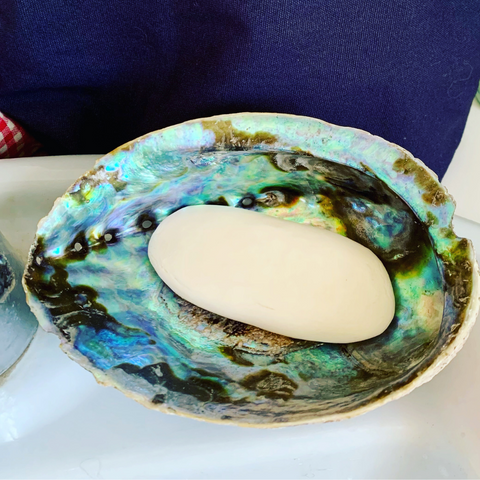
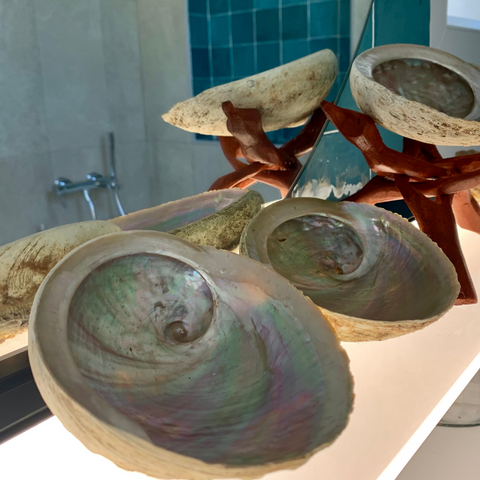
Paua and Ormeau as decoration for your bathroom
We also offer pretty pendants in the eye of Saint Lucia and others in abalone.
Thank you for reading this article, feel free to comment and add information, personal experiences.
0 comments